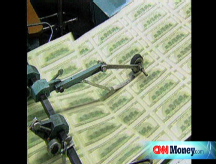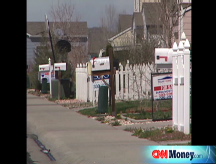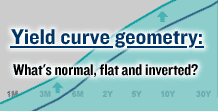Slow road to recovery for credit markets
Key parts of the debt market have shown signs of life in recent weeks. But further improvement will take some time.
NEW YORK (CNNMoney.com) -- If the credit markets improve from here, expect it to take some time.
Conditions have improved somewhat in the past two and a-half months. Back in mid-March -- the height of the credit crisis -- the near collapse of Bear Stearns (BSC, Fortune 500) sent debt buyers running for the hills.
But last week, the amount of outstanding commercial paper - a key source of short-term funding for companies - increased for the first time in two months, growing by $23 billion to $1.757 trillion, according to the Federal Reserve.
At the same time, both high-grade corporate debt and junk bonds have come roaring back to life as investor appetite for these riskier investments has returned.
Even the overhang of financing for corporate buyouts, which hovered around $200 billion towards the end of last year, has dwindled to about $83 billion, according to Standard & Poor's.
But despite these signs of improvement, today's environment still remains a far cry from the heady days of the recent credit boom when investor demand for any type of debt, risky or otherwise, was virtually insatiable.
The amount of high-yield debt issued in 2008, for example, is down nearly 77% from a year ago, while interest spreads remain sharply wider, making borrowing that much more expensive.
"We have come a fair way back from the depths, but we are still not anywhere near where we were last year," said Eric Takaha, director of corporate and high-yield bonds at Franklin Templeton's fixe
Experts say fears about how the current economic slowdown will impact corporate profits are still weighing on the credit markets.
Earnings growth for the S&P 500 is expected to increase just 8.5% in 2008, according to Thomson Reuters, hurt by big losses from banks and investment banks during the first half of the year. In recent years, profits grew at a double-digit percentage pace.
Those forecasts have led to expectations that corporate defaults will head even higher over the next two years.
"They are going up, the question is how much," said Sabur Moini, head of credit strategy at the investment management firm Payden & Rygel.
Historically low default rates of years past were one of the reasons lenders and investors were eager to finance buyout deals, which often involve the issuance of high-risk, high-yield bonds.
While current default rates remain below the historical average of about 5%, Moody's expects that number to reach 5% by the end of 2008 and 6% a year from now before topping out.
That may be overly optimistic though. If this economic downturn winds up being a recession along the lines of the one in the early 1990s, Moody's warned that default rates could hit 10%.
"Corporate defaults are ripening on the vine," said John Atkins, credit analyst at IDEAGlobal. "Once those start to pile up, we will have a reassessment of wh
Rising corporate default rates in 2009 would clearly be problematic. But the credit markets face a more pressing concern that threatens the fragile recovery - Libor.
There have been growing concerns that banks are paying a much higher rate for short-term loans than they are actually reporting in order to avoid appearing in dire straits. That has fostered doubts about the accuracy of the London inter-bank offered rate, or Libor, which is a key measure of the health of the global financial system.
Currently, the 3-month Libor rate is 2.64%, less than half what it was just a year ago when the closely-watched rate stood at 5.36%. As such, some credit experts believe Libor is artificially low and should be higher.
The British Bankers' Association, which oversees Libor, has conducted a review of the system and is expected to announce its findings later this week.
But since rates on corporate bonds, leveraged loans and U.S. mortgages are pegged to Libor, a drastic change in how it is calculated could pose a shock to interest rates, again rattling sentiment in the credit markets.
Experts warn that regulators may be to hesitant to announce major revisions, particularly one that would boost Libor, at a time when the credit market still needs time to heal.
"We still have a long and arduous recovery ahead," said Atkins. ![]()




